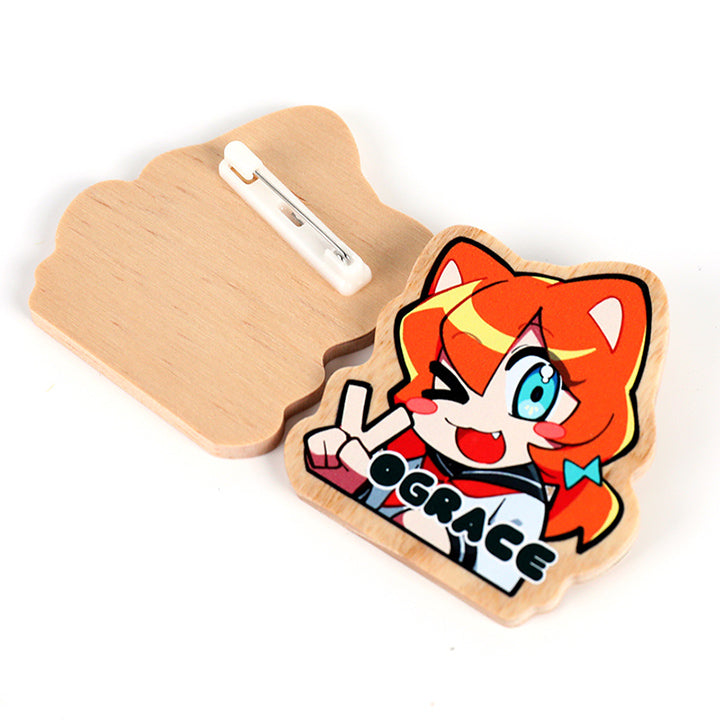The use of wooden pins in the automotive industry;
The use of wooden pins in the automotive industry is relatively limited, but they do have some niche applications in this field. Some examples of the use of wooden pins in the automotive industry include:
- Prototype and model-making: Wooden pins are often used in the prototyping and model-making stages of the automotive design process, where they can be used to mock up and test various components and assemblies.
- Specialty applications: Wooden pins may be used in specialty applications where metal pins are not suitable, such as in the restoration of vintage or classic vehicles.
- Low-volume production: In some cases, wooden pins may be used in the production of low-volume or custom vehicles where the cost and complexity of using metal pins is not justified.
- Vehicle assembly: Wooden pins can be used in the assembly of vehicles to secure various components in place, such as doors, hoods, and trunks.
- Engine components: Wooden pins can be used as bearings or pivot points in engine components, such as camshafts and crankshafts.
- Suspension systems: Wooden pins can be used in suspension systems, such as in the pivots of shock absorbers or the links of sway bars.
- Interior trim: Wooden pins can be used to secure interior trim components, such as dashboards, door panels, and seat frames.
- Other applications: Wooden pins can also be used in a variety of other applications in the automotive industry, such as in the production of wheels and tires, and in the manufacture of tools and machinery used in the industry.
Overall, the use of wooden pins in the automotive industry is driven by the need for strong, durable, and cost-effective fasteners that can withstand the demanding conditions of the automotive environment. A review of the use of wooden pins in the automotive industry can provide valuable insights into the ways in which these fasteners are used, the benefits and limitations of their use. The use of wooden pins in the automotive industry is relatively limited, but they do have some niche applications in this field. The main factors that may influence the use of wooden pins in the automotive industry include cost, performance, and the specific requirements of the application. A review of the use of wooden pins in the automotive industry could provide valuable insights into the benefits and limitations of using wooden pins in this context.
“The influence of wood type on the strength and durability of wooden pins”
The type of wood used in the production of wooden pins can have a significant influence on the strength and durability of the pins. Different types of wood have different mechanical properties, such as strength, density, and elasticity, which can affect the performance of the wooden pins in different applications.
For example, hardwoods such as oak and maple tend to be stronger and more durable than softwoods such as pine and spruce. Hardwoods also tend to be more resistant to wear and fatigue, which can make them more suitable for use in applications where the wooden pins will be subjected to repetitive loading.
The density of the wood can also affect the strength and durability of wooden pins. Denser woods tend to be stronger and more resistant to wear than lighter woods, but they may also be more difficult to work with and may require more energy to produce.
In addition to the type and density of the wood, the size and shape of the wooden pins can also influence their strength and durability. Larger wooden pins may be stronger and more durable than smaller ones, but they may also be more expensive and may not be suitable for certain applications.
Overall, the influence of wood type on the strength and durability of wooden pins is an important factor to consider when selecting wooden pins for a specific application. It is always a good idea to consult with a technical expert or engineer when choosing the type of wood for your wooden pins to ensure that you choose a wood that is suitable for your needs.
“A review of the environmental impacts of wooden pin production”
The production of wooden pins can have various environmental impacts, both positive and negative. Some of the key environmental impacts of wooden pin production to consider include:
- Carbon footprint: The production of wood pins typically has a lower carbon footprint compared to the production of metal pins or other alternative materials. Wood is a natural, renewable resource that stores carbon as it grows, and the production of wooden pins does not require the use of energy-intensive processes such as melting or forging.
- Resource efficiency: The production of wooden pins is typically less resource-intensive than the production of metal pins or other alternative materials. Wood is a relatively abundant resource, and the production of wooden pins does not require the mining of raw materials or the use of toxic chemicals.
- Sustainability: The sustainability of wooden pin production depends on the sourcing practices of the wood used. If the wood is sourced from well-managed forests, the production of wooden pins can be considered sustainable. However, if the wood is sourced from unsustainable sources, such as illegal logging or clear-cutting, the environmental impacts can be significant.
- Waste: The production of wooden pins generates wood waste, which can be recycled or used as fuel. However, if the wood waste is not properly managed, it can contribute to environmental pollution.
- Other impacts: The production of wooden pins may also have other environmental impacts, such as air and water pollution, depending on the specific manufacturing processes used.
Overall, the environmental impacts of wooden pin production are largely dependent on the sustainability of the wood sourcing practices and the specific manufacturing processes used. A review of the environmental impacts of wooden pin production can provide valuable insights into the ways in which these impacts can be minimised and managed.
